Introduction
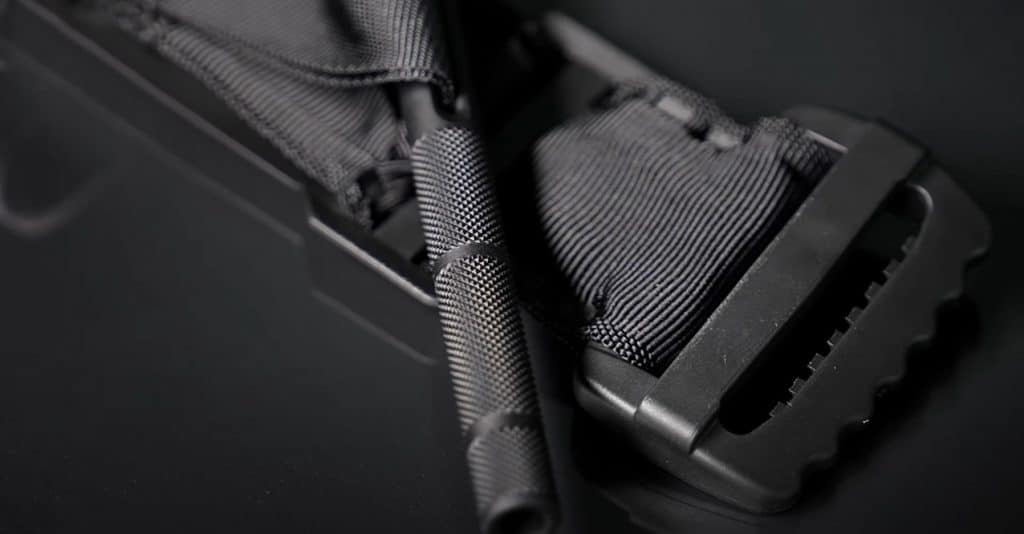
Top Best Tourniquet Market Options
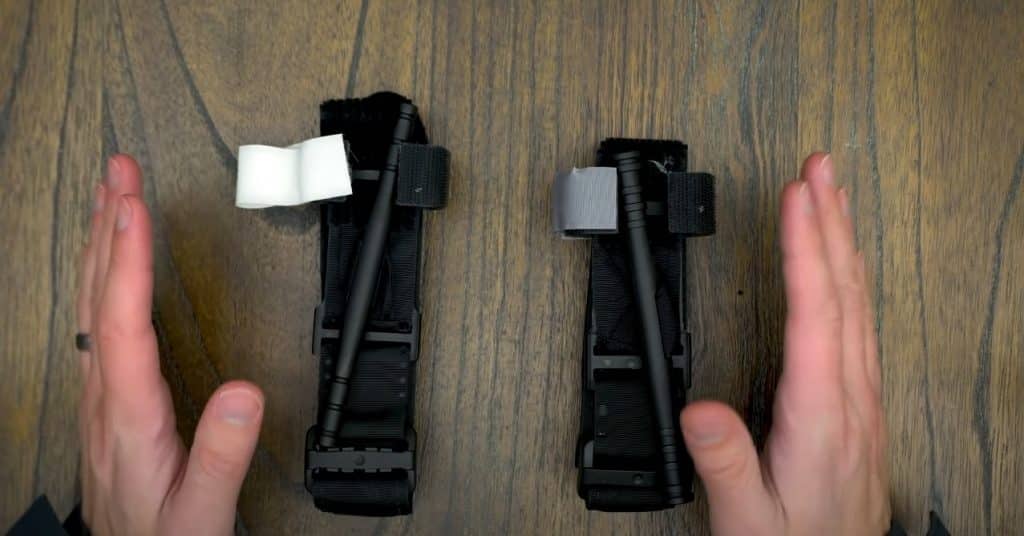
1 – Combat Action Tourniquet 7th Generation
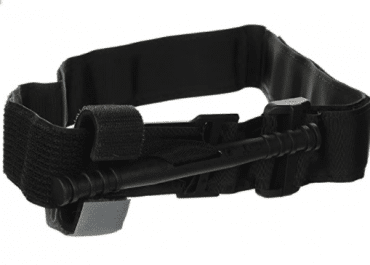
A usual price of such a Combat Application Tourniquet is around 100 dollars. Still, the price is justified, especially because these devices were tested by the U.S. Army’s Institute of Surgical Research. Besides, you can buy it in a “basket”, including special scissors and a chest seal.
2 – Special Operations Forces Tactical Tourniquet (SOFTT)

This tourniquet is Special Operation Forces proven to be effective if you apply direct pressure, but it is heavier than the CAT tourniquet discussed above. It is so because it has a thicker MOLLE webbing.
By the way, SOFTT tourniquets are also approved by the Committee on Tactical Combat Casualty Care. These tourniquets would increase your chances to survive an emergency situation if you damaged your lower extremities, for instance. In its windlass system, it contains a gator-strip buckle.
To the point
How many lives, in your opinion, emergency tourniquets managed to save? Probably, more than you think. A high-quality tourniquet is a definite must-have in any emergency kit or the first-aid kit. Unfortunately, Survivalists-newcomers might keep multiple items in their first-aid kits, including medical glue and stitching kits, forgetting about the importance of common tourniquets for their lives and the lives of their loved ones.
There are many tourniquet reviews on the Internet, but our goal is to help distinguish a good tourniquet from a low-quality one.
In this article, we will take a closer look at the best tourniquet options available on the market today.
Best Tourniquets: What Are They?
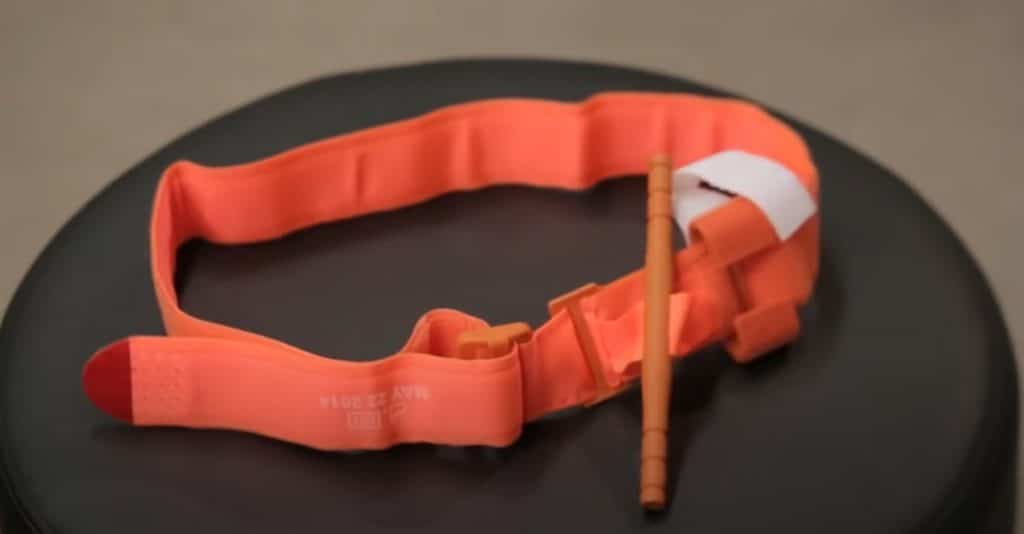
- is a product of a reliable manufacturer
- is created from high-quality material (elastic tourniquets perform their functions probably in the best way, so consider buying these guys)
- not a “weak material”: thin and “fragile” materials cannot maintain pressure, which is essential for saving lives when using most tourniquets
- not a piece of clothes!
The last point on the list is significant: you cannot create a proper tourniquet from the fabric from your sleeve. If you plan to stop severe bleeding caused by an accident, you need special emergency tourniquets — they are the only helpers that can stop the blood flow. You have to learn how to use triangular bandage as well.
Types of Modern Tourniquets
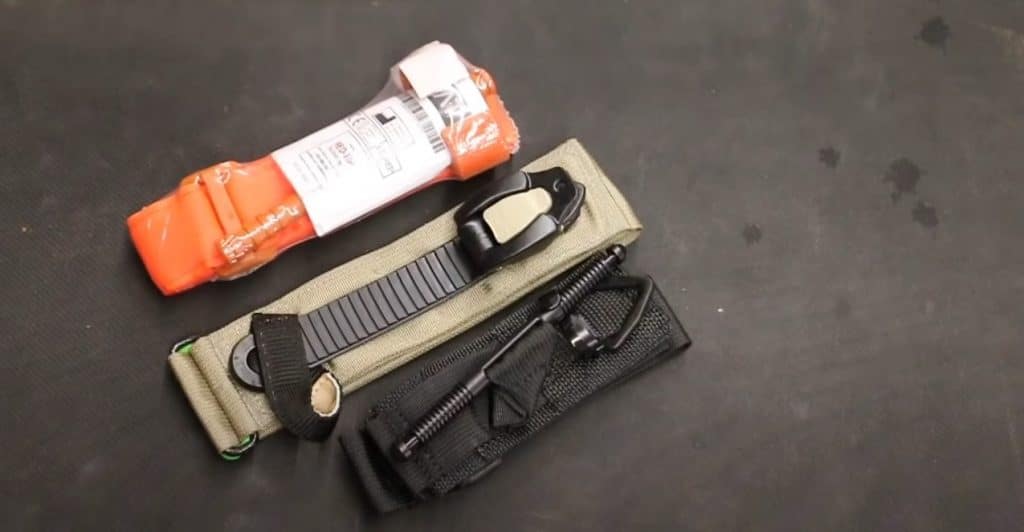
1. Windlass tourniquets
These are the most trustable and reliable tourniquets among the entire variety. To apply a windlass tourniquet, you have to deal with its loop windlass retention strap. The windlass on the tourniquet acts as a regulator of applying direct pressure.
These kinds of tourniquets usually come with a windlass clip for a rapid windlass lock and safe windlass security and a single routing buckle for fewer windlass turns and effective slack removal. On the market, you might face tourniquets with a metal windlass or other tourniquet options with an aluminum windlass.
To stop blood flow, you need to turn the windlass as tightly as possible. Such a durable windlass system allows bringing the injured person to the hospital without much arterial blood loss.
Even though we stated that wearing clothes is unadvisable, and an improvised tourniquet is better than nothing in an emergency situation. That is why if it turns out that you do not have an “official tourniquet”, quickly make one from fabrics and a rod. Use the rod to create a windlass mechanism and turn it until you stop the blood flow. Are such “improvised windlass tourniquets” dangerous?
Well, they might be if there are many bacteria in the clothes — then using it might lead to blood infections. But if you do not have a proper windlass device, this is better than nothing at all.
2. Ratcheting tourniquets
Ratcheting tourniquet options are not preferable if you have windlass ones at hand. They are not preferable because they might easily damage the skin of an injured person, only adding extra pain.
However, for military affairs, such tourniquets are widely used. For instance, such a ratcheting medical tourniquet was created for army applications.
3. Elastic Bands
An elastic band is something you probably already have in your first aid kit. They can be used as the simplest version of the tourniquet, but it is hard to say whether they are good at occluding blood flow or not. And though they act like pressure dressing, the real amount of pressure it provides is hardly enough to stop the blood flow.
But still, if adequately tightened on the injured limb, this tourniquet can save your life.
4. Pneumatic tourniquet options
These are not the best tourniquets for preventing severe bleeding. Their mechanism goes as inflating the bladder, thus applying pressure, and this pressure is supposed to prevent blood loss. However, these tourniquets do not provide enough pressure to stop a life-threatening extremity bleeding in real life, so we would not advise you to get these for your kit.
Caution! Fear the Fakes!
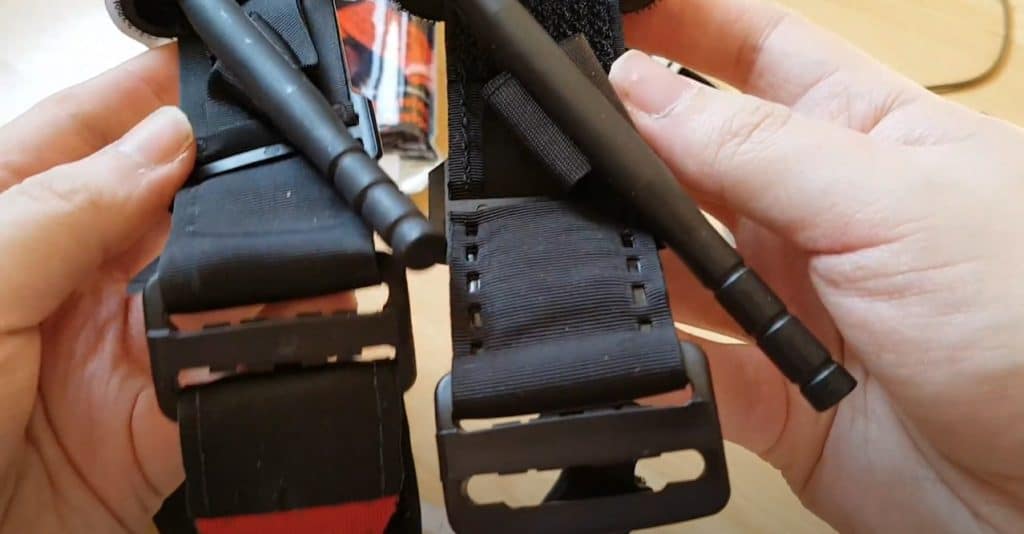
How can I spot the fake? — you might be wondering. We are here to help you with it. Pay attention to the following point when looking for a tourniquet for your kit:
1. Avoid E-CATs
So-called E-CATs are famous “alternatives” for the original CATs but designed and created in China. They are of lower quality, and there is a high probability of running into tissue damage while using them.
2. Check the seller
We do not recommend trusting the unknown sellers and their products, especially if these products are supposed to save your life. We suggest you choose the products by North American Rescue — they are tested in extreme situations and can help you avoid hypovolemic shock.
3. Check Logo
Fake tourniquet producers use fake logos that might remind you of the original, but they are never the same. Remember what the original CAT logo looks like and choose only products with this kind of logo.
4. Check supply number
Original tourniquets by CAT have a supply number. Do not hesitate to check it.
5. Avoid low-priced options
Usually, the price is a reliable indicator of the quality of a standard tourniquet. However, low-price options will not save your life: they are created from the cheapest low-quality materials, which cannot provide adequate circumferential pressure to stop the blood. Moreover, they are usually weak and can be destroyed in case of strong tension.
How Can I Pick The Right Tourniquet?
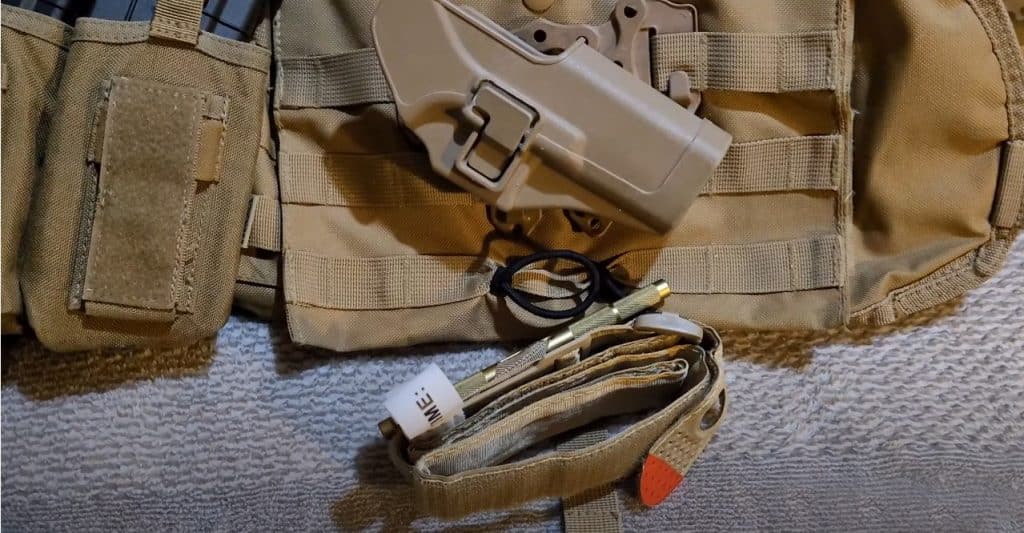
- The width of a tourniquet
Too narrow tourniquets are, of course, better than nothing, but they are not recommended for use. The reason is that, first of all, they are more likely to tear, and, secondly, they bring extra pain to the injured person. Choose wider options — this is the best decision.
For example, CATs and SOFTT-W tourniquets are 1.5″ wide, and it is quite enough for a high-quality tourniquet to save one’s life and not injure the person more.
- Animal tourniquet options
If you are planning to go camping with your pets, think of getting a special tourniquet for them as well. They are smaller, and their effectiveness is tested on animals. On the market, there are several available options. For example, check TacMed K9 to prevent your pets from bleeding.
- Children tourniquet options
If you have kids, you might be thinking of a special tourniquet for them as well. In general, you can use your CAT tourniquet — it fits children and teenagers from 6 to 16.
- The material
The best option for you will be to pick a tourniquet created from smooth and relatively soft material to avoid additional body damages while using the device. No rough edges are acceptable for any tourniquet.
- General usability
If you pick an option that is not easy to use, it might take you too long to figure out how to apply it in case of an emergency. Extra minutes might cost you too much — get a tourniquet with an intuitive design.
- Long-term service
You are interested in the device that will serve you as long as possible. That is why buying cheap “fake” versions is not a smart solution. An original tourniquet can be applied several times (we hope you will not need it that much but still), especially if you store it properly, in places without extra heat or extra cold.
You can always buy the best tourniquet pouch for better storage. For example, for CATs, there are NcSTAR options of the pouch recommended by the manufacturers.
How Do I Use My Tourniquet?

There are one-handed application tourniquet options — these can be used with just one hand, and if you are alone and get injured, these guys will increase your chances of surviving. For instance, the U.S. Army’s Institute of Surgical Research proved that a CAT one-handed tourniquet was effective in emergencies.
In the United States, there are special organizations where you can come and learn the basics of first aid. For example, guys from Stop The Bleed help people gain knowledge about applying the tourniquets. They have already taught more than 1.5 million people and are not going to stop in their mission.
Also, for faster application, the so-called “Rapid Application Tourniquet System” (also referred to as “RATS tourniquet”) was invented. By choosing a RATS tourniquet option, you are supposed to save your time fighting for the injured person’s life. However, opinions concerning Rapid Application Tourniquet System vary. Some users state that it is not as effective as it is expected to be. That is why you have to be ready that this tourniquet might not function as well as you would like it to.
Now, let us consider some specific steps to follow while using your CAT or SOFTT-W tourniquet.
Is it a “tourniquet case”?
First of all, you have to figure out if this is a “tourniquet case” at all. Sometimes people use tourniquets when it is not necessary – for small cuts, for instance. But, of course, it is better to apply the device than not, especially if you do not know whether it should be applied or not – just in case.
However, there are still cases when using tourniquets is not recommended: nor CAT ones, neither SOFTT-W options. These cases include the following:
- The application of a direct or indirect pressure does not change anything and does not affect bleeding
- Suppose you get bitten by a snake. Some people think that the application of circumferential pressure can prevent a snake’s venom from spreading all over your body via the blood flow. But, it is not that simple.
Venom uses the lymphatic system to spread instead. So blocking the blood flow will not help at all — it will only cause additional troubles. So now, when you know that a tourniquet is a bad idea in case of a snake’s bite, you should use a bandage instead. It should cover a wide surface of the limb but should not block the blood flow.
We recommend you not to move — the less you move, the less the venom spreads all over the body. If you manage to immobilize the body part that got bitten — this is the best case of all. But let us get back to the tourniquet use.
So, let us suppose this is definitely a “tourniquet case”. What should you do then?
Step 1: Place the tourniquet correctly on the body part
Put an injured limb inside of a tourniquet’s “ring”. Let its fabrics cover the limb from all sides. The tourniquet should be placed above the cut. The distance between the device and the wound should be something about 3 inches. It should not be too close not to damage the skin covering, and it should not be too far to function properly.
Remember that the joints should be “under”, “below”, or simply lower than the tourniquet. There is not much sense in applying the device on a joint — it will not stop the bleeding, but can only damage the joint itself.
Step 2: Tighten the device.
Now, when you locate the equipment in a proper place, you can tighten it. Continue tightening until you see that the bleeding stops. If it does, then you are doing everything correctly. If you have a tourniquet with a windlass, be it an aluminum windlass or any other one with a windlass clip, the process of tracking blood flows becomes easier.
If you see that the bleeding stopped, make sure that the tourniquet is fixed. If it is, you can let the windlass go from your arms, and nothing changes. For this purpose, use a retention clip. A retention clip is a part of a retention mechanism used to secure the tourniquets.
Do not hide the tourniquet with clothes. It should be open so that medical services can deal with it.
Step 3: Write down the time
On the majority of tourniquets, there is some free space right next to the retention clip. This is a so-called “timestamp” that you should use to note the time when you put on the tourniquet.
Notice:
- Medical services would want to know when a tourniquet was applied, but not when an injury happened (however, they are often close to each other). Why is it important? The thing is that you can keep the tourniquet on the limb for 2 hours without the risk of its damage. If necessary, continue keeping it for 2 hours more, but then you might face tissue damage.
Step 4: Check if it still functions
After you apply the device, do not forget to check it periodically. You can find that it does not function well anymore if you start feeling the pulse below it. If it turns out that your device stopped working, you can always add one more tourniquet above the first one. This is the reason why you should have at least two tourniquets in your kit.
Step 5: Wait for medical help
This is the most obvious and, at the same time, the most ignored point among survivalists. You must not move too much with a tourniquet! Do not continue the trip. The device cannot “cure” you! Stay at the place where you are, but send someone for help. The best case is if you have someone to stay with you as well. Be responsible about this emergency — this is the matter of your life!
What Else Matters?
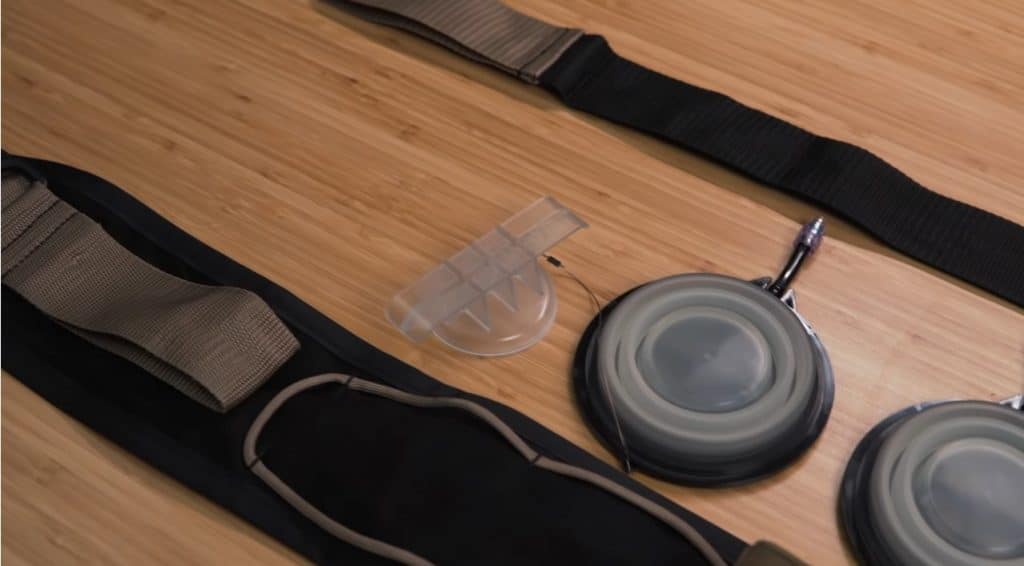
- Junctional tourniquets
These are quite different tourniquets, which serve a different purpose. They are used to prevent bleeding if the person gets damaged in the armpit or groin area. You cannot use an ordinary extremity tourniquet for this kind of injury.
- A bandage
The chances are that if you have a professional tourniquet, a simple bandage will not help you better. But, if the injury is not serious, a bandage will be just enough. Besides, in some situations, a bandage is more appropriate than a tourniquet. For instance, if you got bitten by a snake.
- Scissors
Scissors might be useful not only for true survivalist purposes but also for medical goals as well.
- Peroxide
Obviously, if you have a slight cut or any other small injury with a destroyed skin covering, the chances are that you can survive this trouble. Still, you should always keep in mind the probability of infection. So, to play it safe, get a bottle of peroxide and protect your body from contagion.
These are the basic elements that “complement” a tourniquet. But, of course, your medical kit should include other issues as well — you can buy a complete aid kit or “build it from scratch” by yourself.
Best Tourniquet Summary
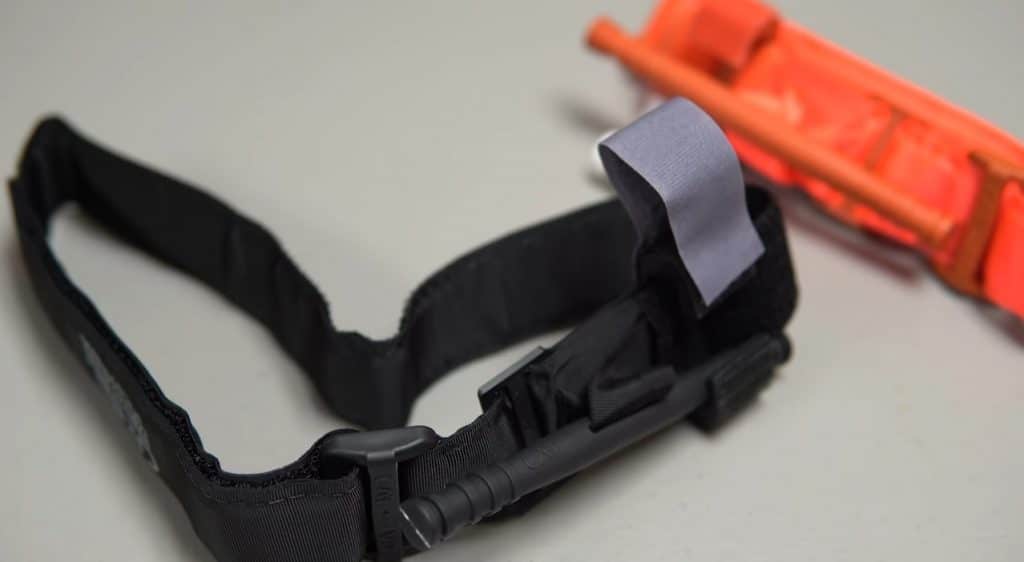
Try to stay calm if you or someone from your company gets injured. Panic is the worst thing in case of emergencies. If you develop stress resistance, you will be easier and better deal with these definitely stressful situations. Also, we recommend practicing more. If you manage to hone the skill, you will increase your chances of surviving.
Stay safe and secure!
Frequently Asked Questions – FAQ
What brand tourniquet does the military use?
Military men are one of the groups most susceptible to being injured during operations. They need professional emergency equipment to save the lives of the soldiers. That is why military forces of the United States use Combat Application Tourniquets — CATs — for medical purposes in the field. These tourniquets were approved in 2005 and are still used nowadays.
How many tourniquets should you carry?
In general, it is recommended to carry at least two emergency tourniquets if you want to feel truly prepared. This kind of equipment is relatively light in weight, but it can save many lives in case of emergency. The best case is if you have at least one tourniquet for each member of your camping company. That is why it is important to encourage more people to buy tourniquets for themselves and teach them how to use this equipment properly.
Do CAT tourniquets expire?
An ordinary tourniquet does not expire since it does not even have an expiration date. But, if you feel like your tourniquet is no longer capable of performing its function, you should replace it with a new one. This is for your safety — a shabby tourniquet cannot save your life. If the device was kept in extreme conditions, like extra heat or cold, it should also be replaced.


